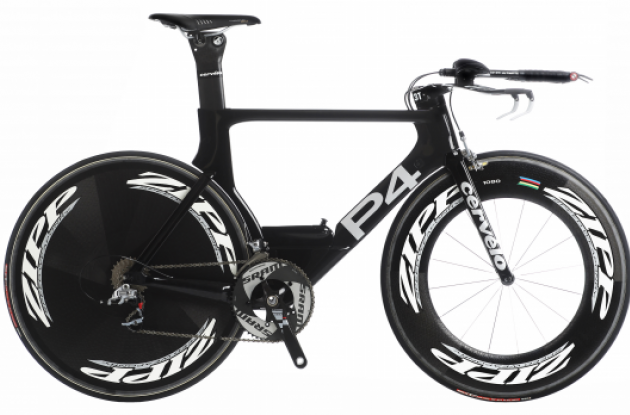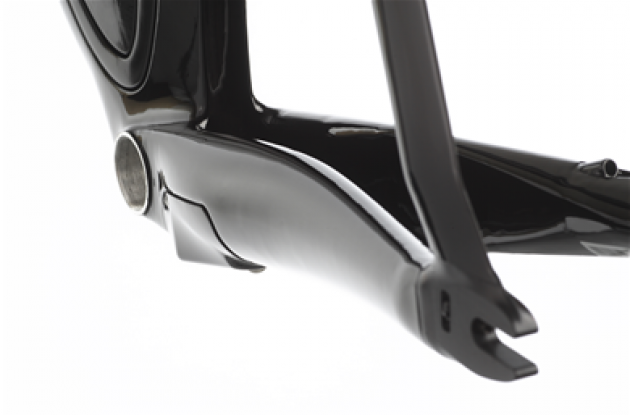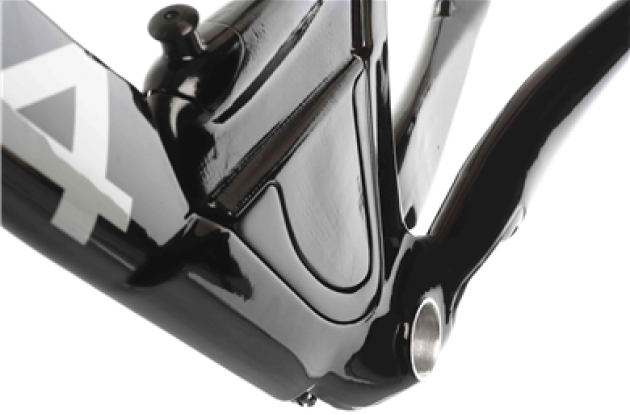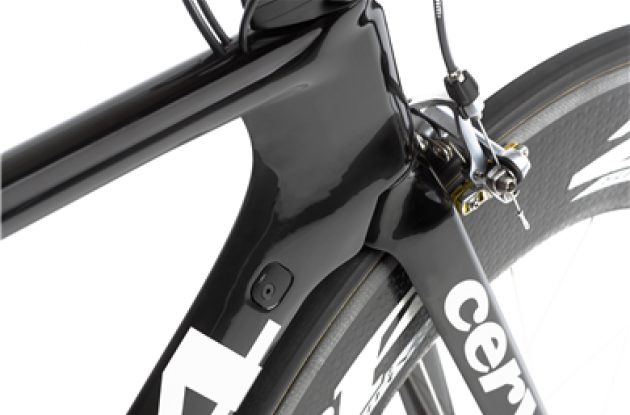Cervelo Debuts the P4 at Interbike
Cervelo introduces its next-generation time trial bike.
Earlier today at Interbike, we were introduced to the brand new Cervélo P4 - the next generation in aero time trial bikes, the Cervélo P4.
The P4 is the long awaited successor to the Cervelo P3 - a bike that, to many, has become the current time trial standard for challengers to live up to. As the P3 according to Cervelo is still the fastest bike available three years after its introduction, it appears clear that creating its successor was no easy task for the Cervelo engineers. After spending millions on research and development and over two months of intensive testing at the San Diego Low Speed Wind Tunnel, the resulting bike - the P4 - is the fastest bike ever in the wind tunnel, including both UCI-legal and illegal bikes.
“The P4 is the biggest leap we have ever made in aero bike technology,” said Phil White, co-founder of Cervélo. “The P series has evolved significantly over the last decade, making it a real challenge to keep finding improvements. With the P4, the mandate was to make it significantly faster than the P3 while achieving equivalent or better performance relative to stiffness, power transmission, low weight and comfort. I’m pleased to report that we have met those goals.”
According to Cervelo, the strengths of the P4 are found in its many fine details, some of which are quite visible but others are difficult to detect at first glance. The key to the performance of the P4 lies in the frameset’s integrated design. This System Engineering approach, which considers the frame, components, wheels, hydration and the rider together, generates substantially reduced drag values in virtual (CFD) and physical wind tunnel testing. Highlights of the P4 system include:
Optimized Aero Tube Shapes
The aero profiles of the P4’s tubes are completely new, improving airflow attachment and reducing turbulence relative to other designs. In addition, the new asymmetric aero chain stays generate very low drag values, particularly in cross-wind environments, compared with chain stay designs from earlier P-series and competitor models. Additionally, the seat stays are pitched forward to reduce frontal surface area and their joints with the seat tube are optimized for maximum aerodynamic efficiency.
Fork
The custom fork, developed by vroomen.white.design, is integrated seamlessly into the head tube and downtube. This feature was first conceived by Cervélo in 1995 and comes to fruition now on the P4. Cervelo also invested significantly to optimize the spacing between the tires and wheels, the frame and the fork. This is a very complex area aerodynamically and our engineers tested over seventy-five different designs during the development process. The result is a significant reduction in drag values generated in this section of the bike.
Front wheel cut-out
"We invented the front wheel cut-out back in 1995, but in subsequent testing we have found it not to be the fastest design. So despite current trends the P4 does not have a front wheel cut-out, as we have never seen one that works. While front wheel cut-outs can show good drag values in the tunnel, this is only the case because there, the front wheel is perfectly in line with the downtube. In reality, the rider constantly makes small steering adjustments, which stalls the airflow onto the downtube and increases the drag," said a Cervelo spokesperson.
Rear Brake
Although almost invisible to the eye, the P4's rear brake is a real eye opener. The P4’s custom rear brake is fully integrated into the frame design. The brake, fully designed and developed by vroomen.white.design, is recessed into an alcove immediately behind the bottom bracket. By using a recess instead of placing the brake above or underneath the chainstays as is commonly done, the brake is not only invisible to the eyes but, more importantly, to the wind. Thanks to the structural carbon brake booster, the brake has the same power and modulation as a Shimano Dura Ace brake while being 30% lighter. The brake booster is easy to remove for full brake service and allows access to the brake mechanism for quick adjustments on the road. Looks like Shimano and SRAM have got work to do.
Hydration
Hydration has long been a challenge on aero bikes, with traditional bottle shapes corrupting the efficiencies of proper airfoil tubes. The 570 ml water bottle on the P4 smoothly integrates the down tube, seat tube and bottom bracket in a single aero form. The design reduces the drag typically associated with bottles mounted on the down tube, seat tube or behind the saddle and in fact, the P4 is faster with the bottle than without. No details about the water bottle materials were disclosed. While an integrated water bottle is a great idea we've been looking forward to seeing for years now, we do hope that the water bottle will not be made from plastic material containing any substances that may cause harm to the human body.
According to Cervelo, the P4 bottle is the same for all frame sizes, is easy to grab, easy to drink from and refillable on the go. P4 owners have the option to replace the bottle with a utility box (handy for Dura Ace 7900 batteries, spare tubes, mini pump and tools) or a structural stiffener.
Pricing and Availability
The Cervelo P4 will be available as a frameset in late December 2008 and will retail for US$4,800. Beginning in late January 2009, The P4 will also be available as a complete bike with SRAM Red components for US$6800.
Visit www.cervelo.com for further details.











